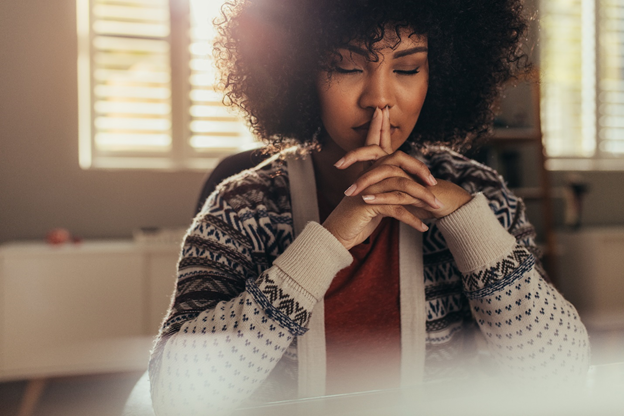
Stress and Chronic Pain (Part 4)
This is a four-part series about the relationship between stress and pain. I was inspired to write this series, after re-watching the movie FREE SOLO about Alex Honnold, who climbs a 3000 foot shear cliff with no ropes or safety equipment. I was so stressed out watching this movie (even though I KNEW he would make it to the top) that by end of it, my shoulders were so tight, I was wincing in pain, every time I lifted a glass of water to my mouth.
You can read Part 1 here and Part 2 here and Part 3 here.
In the previous installment we talked about the relationship between control and stress and the relationship between stress and pain. I quoted a study I read years ago, about patients in a hospital who were divided into two groups. One group had their pain meds right next to their bed and could take them as often as they wished. The other group had to ask the nurse for their pain meds. Surprisingly the first group – who could take as much as they wanted – took LESS pain medication than the second group who had to ask the nurse for it.
From my perspective, it made perfect sense that the first group - who had more control over their situation - experienced less stress and this naturally led them to feeling less pain. As mindfulness experts such as author Jon Kabat-Zinn like to point out, it’s often the “story” we tell ourselves that causes as much pain as the original source of the pain itself. (In this case the story might be I feel anxious because I don’t know when the nurse is going to come and give me more medication.)
Mindfulness (and having a sense of control) can help patients modify the story that they tell themselves around their pain. There is an often told story in mindfulness about “the tale of the two arrows” that certainly applies here. In this ancient narrative, (apparently, first told by the Buddha) the first arrow represents the real pain we feel when we get physically hurt. We ALL get struck by arrows: Whether it’s a muscle pull, a migraine headache, a back spasm, a stomachache, or an injury that requires medical care. Unfortunately, pain, injury and sickness are a very real part of living. That’s the first arrow.
The second arrow represents the story you tell yourself ABOUT the pain: Why me? Why do I have to deal with this pain? This pain is terrible. I wouldn’t have this pain right now if that jerk hadn’t run into my car at 70 miles per hour. That’s the second arrow.
Mindfulness helps us separate the real physical pain of the first arrow from the psychological pain of the second arrow. This understanding of how pain works on both a physical and psychological level, can significantly increase your pain threshold because you are perceiving less pain overall.
As I mentioned in the previous installment, the primary purpose of the very first Mindfulness Clinic at the University of Massachusetts Medical Center, founded by Jon Kabat Zinn, was to treat patients who were suffering from chronic pain. As an MIT-trained scientist, Kabat-Zinn wanted proof that his alternative approach to treating these patients was working. He conducted various studies that he writes about in his first book FULL CATASTROPHE LIVING: “In one study 61 percent of the patients with chronic pain achieved at least a 50 percent reduction in pain. This improvement was accompanied by a sharp drop (55 percent) in negative mood states, an increase in positive mood states, and major improvements in anxiety, depression, and hostility.”
He and his team also compared two groups of 21 patients (42 total), each going to the hospital pain clinic over a ten-week period. One of the two groups split off and took the 8-week mindfulness course at the MINDFULNESS Clinic. The first group, who didn’t participate in the meditation, “showed little change over the ten weeks.” While the meditating group experienced “major improvements.”
Mindfulness practice is all about watching your pain, your worry, your stress and your suffering and not reacting to it. Just letting it be. So, it just sits there and doesn’t grow or intensify. It never gets to a secondary level of stress where you get stressed about being stressed. That’s because there’s no ancillary “poor me” story about it. Or if there is, you are aware of it and allow it to be, without feeding it with more negative thinking. While this level of mental control takes practice to achieve, it’s enormously liberating when you master your ability to let your problem be exactly what it is and not magnify it with an additional story.
When it comes to chronic pain, being in the present moment means acknowledging the pain when it’s there – but also acknowledging the times when it’s NOT there. And more importantly, acknowledging the fact that this pain will most likely fluctuate, like everything in life. This idea in mindfulness is known as the concept of impermanence. When we are experiencing good times – these good times will fluctuate and change. But when we are experiencing bad times – including pain – that is most likely going to change (come and go) too.
Talking about stress, Elissa Epel, a psychologist at the University of California, San Francisco said: “One thing to remember about chronic stress is that it's only our thoughts that make it seem chronic. Viewed mindfully, no situation is truly chronic — there are always calm moments to notice and be present for. Moments that can be lived in with ease.” The same idea can be applied to pain.





James Porter
Author